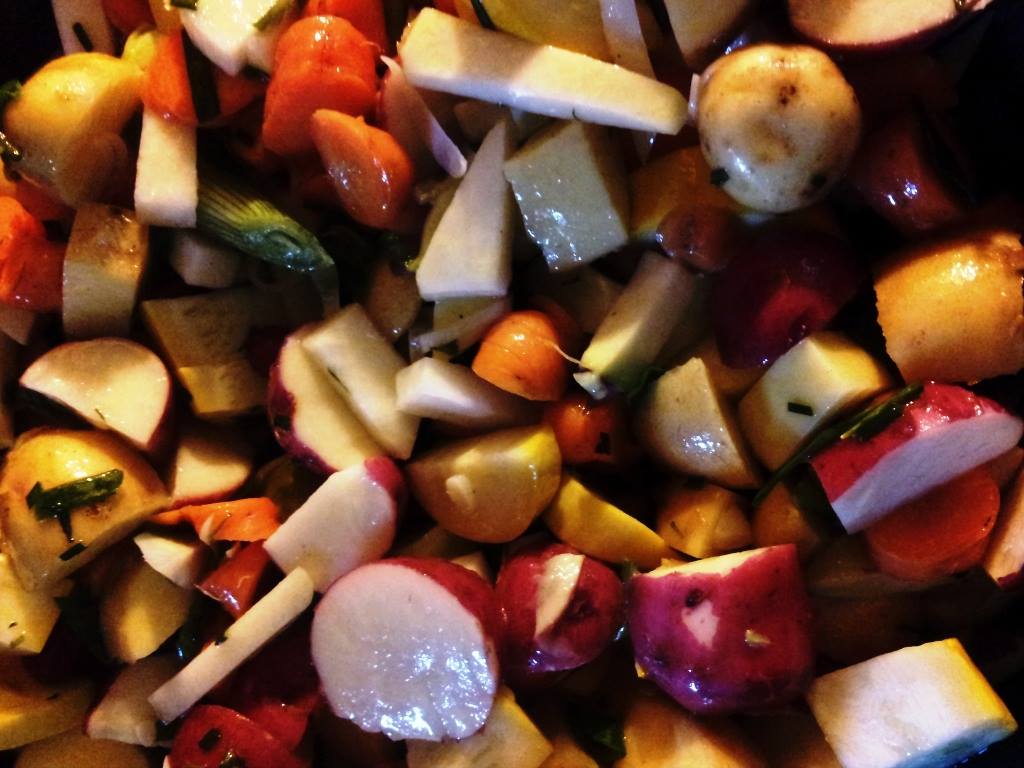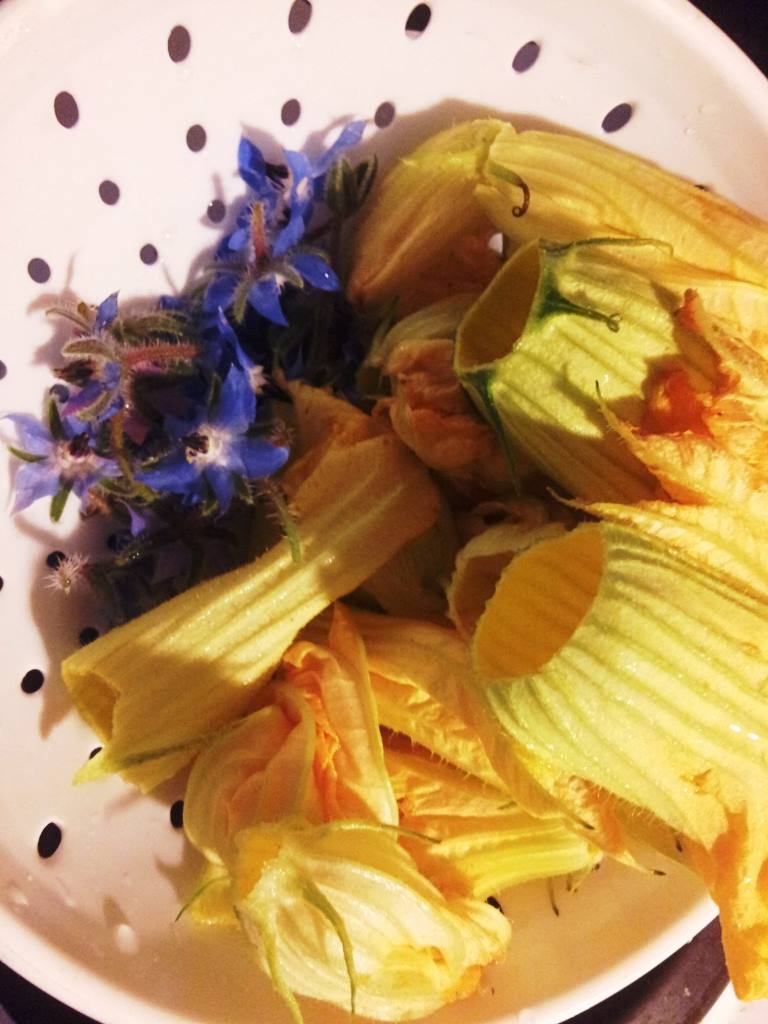Locavore, omnivore, farm to table. Does it matter? We think so but wanted some actual numbers and statistics on this subject. So we looked into the ratio of energy expended for each calorie of energy consumed, which we get into in this article.
Fresh food from the garden is the best tasting and most nutritious food we can eat. The next best is to be a locavore.
Shopping at farmer’s markets for produce from local farms and market gardeners is the next best thing. The best fresh food, farm to table or garden to table, while supporting the local economy and growers.
Food Costs Statistics
A 2013 study assessed the amount of energy it takes to bring food to our tables here in the US. While this is now outdated at seven years old, it gives us a base line idea. The study concluded that we burn around 15 calories of energy in fuel costs for every single calorie of nutrition. [1]https://learn.uvm.edu/foodsystemsblog/2013/07/18/counting-calories-the-energy-cost-of-food/
Plant Locally… Eat Locally… Save Energy… Be Healthy
What does that statistic mean? To put these statistics into perspective:
We burn around 15 calories of energy for every single calorie of nutrition.
15 fuel calories equates, in energy terms, to 1.2 gallons of gasoline embodied in the average American’s daily diet. [2]https://learn.uvm.edu/foodsystemsblog/2013/07/18/counting-calories-the-energy-cost-of-food/
The US food system is admittedly more energy intensive than most, but high fuel demand in the service of food procurement is the norm around the world. The bottom line?
Our food chain is linked to an enormous energy platform and is highly energy dependent.
How can we become less energy dependent? There’s a solution that many have already discovered.

Farm to Table!
Now, in full disclosure, we’re not purists in this. We enjoy mangoes, pineapple and the occasional papaya, and consume avocados and bananas regularly, none of which can grow naturally in our zone 7 area.
But the more we garden and take trips to the Farmer’s Market, the more we appreciate how consuming what’s grown locally can affect our health, our region’s economy, and our wise use of energy. The more aware we become of how every choice we make affects something else, the more we realize that our choices count.
Farm to Table… Buy Local… Eat local… Community Supported Agriculture… CSA… Farmer’s Markets… Sustainable food… Locavore!
No matter which terms you use, these all tie in with an awesome growing trend that offers a major solution for energy conservation, better nutrition, food security, and community self-reliance.
Advantages of Farm to Table
- Less pollution
- Reduced storage needs
- Reduced transportation costs
- Often organic and sustainable
- Knowing origin of food sources
- Survival and disaster preparedness
- Less traffic and wear and tear on our roads
- Creates ancillary jobs and education programs
- More community self-sufficiency and resilience
- Creates stronger families, neighborhoods and communities
Becoming a Locavore Supports the Entire Community
Farm to Table supports local growers which supports the local economy in general. Being a locavore means you get fresher and healthier produce, while supporting your community.
Community benefits include more local jobs, small farm families, local networks between producers, vendors, and consumers, and boosts the local tax base.
Family Values
The family farm in this new era that includes online aspects such as websites and social media can provide interesting jobs for the entire family. Most families that work together, grow closer and stronger together.
Farm to Table supports the community, which supports the state. What supports the state, supports the country. Be a locavore.

Origin and Development of Locavore
The word “locavore” was coined by Local Foods Wheel co-creator Jessica Prentice.
In 2005, Jessica Prentice and two other San Francisco Bay Area women, Dede Sampson and Sage Van Wing, had hatched a plan to support local growers.
By challenging Bay Area residents to eat only foods grown or harvested within a 100 mile radius of San Francisco for the entire month of August. They came up with a catchy name, launched a website, and the movement grew like a zucchini in the summer Locavore was even the 2007 Word of the Year for the Oxford American Dictionary!
Locavores are interested in making an impact on their community by supporting the local farmers.
The locavore movement has been successful in supporting small local farmers. After declining for more than a century, the number of small farms has increased 20% in the past six years, to 1.8 million, according to the US Agriculture Department.
Nationwide, locavorism has been rapidly gaining popularity in the US. Comparing data from the 2012 Census and the 2017 Census, direct to consumer food values more than doubled via farmers markets, farm stands, CSAs, and also online. In five years, locally sourced food values rose from $1.31 billion to $2.81 billion — such growth strongly indicates our demand for fresh from local farms has been and will continue growing leaps and bounds.
The locavore movement has helped increase the number of small farms by 20% in the past six years, to 1.8 million.
SOURCE: USDA

3 Examples of Locavores Supporting Local Foods
North Carolina 10% Campaign
North Carolina’s Center for Environmental Farming Systems was launched in 2010. This initiative was created to stimulate economic development, create jobs, and promote North Carolina’s agricultural offerings. The campaign is a partnership between The Center for Environmental Farming Systems, (CEFS) with support from N.C. Cooperative Extension and the Golden LEAF Foundation.
Project participants pledge to spend 10 percent of their food budget on locally sourced foods and then receive weekly emails prompting them to record how much they have spent on local food that week.
Since beginning the partnership program the CEFS has signed on over 8,000 people and nearly 1200 businesses. CEFS Participants have pledged to spend 10 percent of their food budget on locally sourced foods. Weekly emails keep members informed as to how much they have spent on local food that week. So far folks and businesses spent over $72 million on locally produced food.
Since 2010, families and businesses have spend over $72 million on locally produced food as a result of North Carolina’s Center for Environmental Farming Systems program.
SOURCE: CEFS.NCSU.edu[3]https://cefs.ncsu.edu/food-system-initiatives/
Urban Growers Collective
Unfortunately, urban environments are known for their food deserts in areas of poverty, where most of the food available is shipped in. Urban Growers Collective urban farms is on 11 acres in Chicago. They seek to foster nourishing environments which promote health, healing and creativity, and economic development via urban agriculture.
Fifth Season Co-op
The Fifth season Cooperative,[4]https://www.fifthseasoncoop.com/ established in 2010, functions differently than most other local food co-ops in that it does not have a storefront. With six member classes, Fifth Season’s program includes everyone involved in getting local food from the ground to the table.
Member classes include:
- Workers
- Processors
- Producer Groups
- Buyers
- Distributors
The Co-op functions as a food hub that helps to take down the barriers to market entry for smaller local growers and processors by offering GAP auditing. GAP is an insurance umbrella and connection to the distributor member’s sales network and logistics.[5]https://www.ams.usda.gov/services/auditing/gap-ghp
This model works well for moving large volumes of locally produced foods into local establishments that already serve the public such as restaurants, hospitals and schools. Fifth Season is located in Viroqua, WI, and aggregates from a 150-mile radius.

Are You a Locavore?
If you enjoy growing and feasting on your own produce, sharing your bounty with others, or perhaps, taking your products to market, then that’s all part of the movement.
In the marvelous movie “The Hundred Foot Journey”, several scenes show the competing restaurant chefs going to the local village market to procure fresh produce for that evening’s menu. It’s a reminder that the increasingly popular farm to table movement in the US and Canada has been a long-standing tradition in many European restaurants. We’re excited to see farm to table eateries growing in popularity across the nation.
If you haven’t yet seen The Hundred Foot Journey, please do. We loved it (numerous times) and think you will too.
The tradition of preparing the day’s menu based on what is locally available may still persist in some regions. In our local NC community we’re fortunate to have several CMA’s and “village type” farmers’ markets.
To see where your state currently ranks in terms of locally produced food, have a look at this updated “Locavore Index”. We needn’t convince fellow gardeners as to the benefits of eating fresh from one’s own garden. But should you have an occasion to eat out, we found listings of farm to table dining establishments quite easily by typing “Farm to Table” in the Yelp search box.
RESOURCES: Locavore Index[6]https://www.strollingoftheheifers.com/locavoreindex/[7]https://www.localfoodswheel.com/locavores/[8]https://www.urbanfarmonline.com/
Interested in Gardening for Profit
If you’re keen to get into market gardening we’ve also dedicated several articles to the topic.
Last year we watched one of the best documentaries we’ve ever seen on the topic of small farming – The Biggest Little Farm. Definitely worth watching for anyone considering—or interested in—what it takes to be a small-scale homesteader.
From the Community
Garden Gourmet Dinner with Fresh Edible Flowers
Teresa McCullar, a regular contributor to the Gardens All Facebook community shared photos of her garden harvest of the day and the dinner she made from it!
Please share your photos and we’ll add them too.

Garden Fresh Roasted Veggies Recipe
Roasted vegetables is one of our daily staple favorites. It’s super simple and super delicious.
- Preheat over to 350℉. We use the convection roast setting
- Wash and chop vegetables
- In a large bowl, stir vegetables in olive oil (healthier), or melted butter
- Add salt, pepper and/or seasonings of choice, such as chopped fresh garden herbs
- Pour into a cast iron skillet or casserole dish for baking
- Bake at 350, stirring twice, until tender
Or find a printable roasted vegetable recipe here.
“Cast iron is our weapon of choice.”
~Teresa McCullar, gardener, homesteader

Simple Garden Fresh Gourmet Meals
Teresa mixes in borage flowers and de-hipped male squash and zucchini flowers for the last few minutes of cooking. Just cut out the bitter pistol and hips of the zucchini flower and… voila! Lovely, tasty, nutritious garden gourmet dinner!

You can find more on edible flowers here.
Teresa’s simple Garden Harvest Recipe
Here’s Teresa’s recipe elaborated:
- Chop any garden veggies of choice (different shapes for different foods if you choose)
- Keep starchy varieties (carrots, potatoes, kolhrabi, etc) smaller sized than peas, zucchini, and faster cooking items
- Warm cast iron on medium low with oil or butter
- Add finely chopped garden herbs of choice (chives, basil, oregano, thyme, garlic, etc plus mildest amount of sea salt or celtic grey salt)
- As it warms up add potatoes & longer cook items
- Stir well (can add chicken stock, veggie stock, etc to lightly flavor)
- At simmer add pea pods, halved brussels, zucchini, etc.
- Stir & place skillet of veggies in oven at 350
- After ten minutes, stir
When it’s done to tenderness (potatoes soft), add edible flowers, stir, and bake for 2 to 5 more minutes.
You can also use curry paste, ginger, sky-is-the-limit to personalize when it’s time to add seasonings.
Thanks, Teresa for this awesome share!
If you want to read and hear more about Teresa’s homesteading story, check out Creative Financing and Living the Homesteading Dream.
Let us know where you figure into this farm to table/locavore revolution and what’s going on in your local community.
Wishing you lots of farm-to-table and garden-to-table locavore meals!
I’m LeAura Alderson, a garden, herb and plant enthusiast with a passion for discovering the many edible and medicinal benefits of the plants all around us, including the weeds! I’m a writer, editor and media publisher for our family of websites.
While I was certified in fitness and life coaching, I am NOT a health practitioner. However, I’m a lifelong health enthusiast, with a keen interest in healthy, organic foods and making home remedies and the content we share is from our own experience and usage as well as that extracted from scientific research so that you can explore further on your own.
Always seek the advice and guidance of your health practitioners first and foremost.
As a family we’re steadily expanding our gardening, experimentation and knowledge around all things gardening, edible landscaping, fresh organic foods and self sustainability with farming in our future. I also own and manage iCreateDaily.com, a site all about transformation through creation, and the power of positivity, optimism and mindset.
References

